Superset training is scientifically proven to build muscle and strength while helping you get your workouts finished faster. It’s one of the best techniques for time efficiency without compromising effectiveness. In fact, superset training raises your intensity a whole level, and if they’re used in a way so the total volume of the workout is maintained or increased, it’s possible to gain more muscle by supersetting, even though you spend less time in the gym.
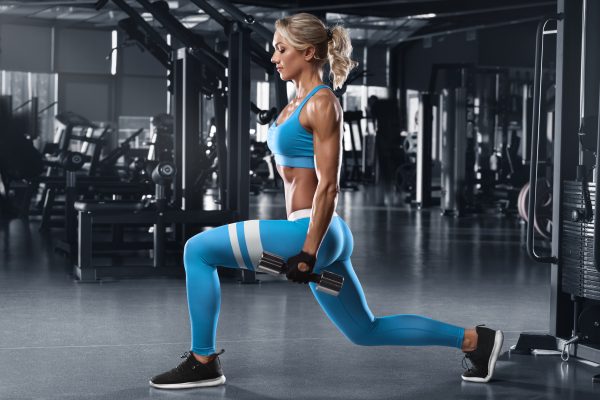
In addition, as physically challenging as supersets can be, many people consider them “fun,” or at least more engaging than slower-paced conventional training with straight sets. (The superset techniques on this page keep you moving).
Traditionally, upper body superset training has received more attention, especially because the most well-known supersets include the classic chest-back pairing and the biceps-triceps combination. But superset training is also a fantastic method for your lower body.
Even better, there are multiple types of supersets you can use for lower body, including some that few people know about. Once you learn each superset variation and see an example with specific exercises, you can use it as a template to create unlimited new workouts of your own, and you will have an unfair advantage over people who don’t know these methods.
Terminology: Compound vs Isolation Exercises
Before you check out these superset workouts below, let’s do a quick refresher on terminology because this is important for understanding how to choose the exercises.
Compound exercises are also known as multi-joint exercises. They involve large muscles, multiple muscles, and allow you to use more weight than isolation exercises. Compound movements are also harder, often stimulating the cardiovascular system, as well as the individual muscles.
The squat is a prime example of a lower body compound exercise. It works the quads, hips and even the hamstrings, while also working many other muscles to stabilize the body. Lunges and split squats are also compound exercises, hitting the quads, hips and hams.
More than one joint is involved in these exercises – namely, the hips and the knees – which is why compound exercises are also known as multi-joint exercises.
There are machine compound exercises for lower body as well. The leg press is a great example, and any kind of squat machine (hack squat, front squat, Smith squat etc.) is also a compound exercise.
There are compound exercises that emphasize the posterior chain muscles as well. The classic example is the Romanian deadlift, which works the hamstrings, glutes, and lower back. The low back extension (aka hyperextension) is also a compound move, working all the same muscles.
Isolation exercises, by contrast, are known as single-joint exercises. They involve small muscles, only one muscle is worked directly, and you usually use lighter weights than you would on compound exercises, because less total muscle mass is involved.
The leg extension is the classic example of a lower body isolation exercise because only the quads are targeted, and the exercise only involves one joint – the knee. The leg curl is another because it too works only one muscle – the hamstrings – and it involves only the knee joint.
Conventional wisdom says you should emphasize compound exercises because they give you more bang for your buck (they work more than one muscle at the same time). It would not be efficient to do a workout consisting of 100% isolation exercises and you would probably not gain as much muscle.
However, if you do some isolation exercises in addition to compound exercises, you’re likely to achieve more complete muscle development than if you did compound exercises alone.
Most of this is common knowledge, but the little-known secret is how you can pair isolation and compound exercises in specific combinations, in a specific order, to achieve a special effect and trigger the greatest muscle growth of all.
Let’s take a look at some of these killer superset combinations, targeting the muscles of the lower body. Some of these workouts I learned from scientific studies, some from top bodybuilders, others through trial and error, and a few from evil trainers who were obviously trying to kill me.
There are workouts here that beginners and intermediates can do, but in some of these combinations, I’m going back and drawing from my roots in”hardcore” bodybuilding, so be forewarned – these are tough, and intentionally designed to test your limits.
These are all supersets, with two exercises done in a row with little or no rest in between, followed by a standard rest interval (one to two minutes, usually, for small and large muscles respectively). Then you repeat the superset for the desired number of sets before going on to your next exercises.
For hypertrophy training, the sets and reps are the same as what you’d usually use – typically 8 to 12 reps for 3 or 4 more sets per exercise. The legs respond well to higher reps too, so working in the 12 to 20 rep range can also be effective.
These are plug-and-play workouts, which means that no matter what kind of training schedule you’re on now, you can easily go try some of these on your next leg day.
1. Antagonist Supersets – Isolati0n / Isolation: Leg Extension Superset To Leg Curl
Even though isolation exercises should not dominate your entire workout routine, the leg extension to leg curl pairing is one of the most popular lower body supersets of all time. In fact, this is one of the exercise combinations used in the scientific research which verified the benefits of antagonist superset training.
Leg extensions followed by leg curls in a superset are a perfect antagonist pair because they work the exact opposite movement pattern – you have knee extension followed by knee flexion.
An advantage of this superset is that it’s not very tiring because both exercises are isolation moves, so this is an especially good combo for beginners, people new to superset training, and people who don’t want to feel physically “destroyed”after a leg workout.
2. Antagonist Supersets – Compound / Isolation: Squat Superset To Leg Curl
A lower body superset can also be done by combining a compound exercise with an isolation exercise. The squat supersetted with the leg curl is a good example.
Squats are a challenging compound exercise that is quad (thigh) dominant, while the leg curl is an isolation exercise for hamstrings. It’s simple: Do a set of squats, move right to the machine for a set of leg curls, rest 90 to 120 seconds, then repeat for at least two more supersets.
This type of superset allows improved muscle recovery because while the squats will leave you huffing and puffing, with quads burning, for the second exercise in the superset, you switch to training the opposite muscle (hamstrings), so as you work your hams, your quads are already beginning to recover. In addition, the second exercise is an isolation move which is less demanding, so supersets like these give you high efficiency and great results, but they won’t kill you.
3. Antagonist Supersets – Compound / Compound: Squat Superset To Romanian Deadlift
Compound supersets for the lower body will kill you! I’m just kidding of course – sort of.
Compound exercises like squats and Romanian deadlifts are the hardest exercises you can do. They are metabolically taxing, and not only leave your leg muscles burning, they stimulate heavy breathing and require a lot of energy.
When you superset two compound exercises for antagonistic (opposite) muscles, one muscle does get to recover while the other is working, but since you move to the second exercise without much rest, you don’t have time to recover from the cardiovascular fatigue.
These types of supersets are exhausting and feel like cardio. But if you have the work ethic to get through them, the results can be astonishing, as you gain muscle and also complement your fat loss efforts as a side bonus.
This type of training is also incredibly efficient. If you were really strapped for time and the only thing you did was squat and Romanian deadlifts for your leg workout, you could walk out of your weight room knowing you spent your minimal time investment well. If you supersetted these exercises, you’d get that workout done even faster. Supersetted compound exercises give you the ultimate in efficiency and effectiveness.
It’s important to remember that if you do a technical compound exercise while fatigued, you must watch your form carefully because on the second exercise when you’re tired, your form is more likely to break down.
Here’s a second example my sadistic trainer Richie used to give me: dumbbell sumo squats (A single heavy dumbbell held between the legs) supersetted to dumbbell Romanian deadlifts. Notice again, this is a compound to compound exercise superset.
I had seen Richie training a female client before me and after we started our session, I made the mistake of calling dumbbell sumo squats a “girly inner thigh exercise” (or something like that). He said, “Oh yeah, let’s try it.” He pummeled my legs with sumo squat / Romanian deadlift supersets until I was basically a blob on the floor in the middle of a pool of sweat.
Most women love this combo because of how well it targets all areas of the hips and posterior chain as well as the thighs and hamstrings at the same time. But trust me, it’s not a “girly man” workout.
4. Same Muscle Supersets – Compound / Compound: Squat Superset To Lunge
If you think supersetting from squats to Romanian deadlifts is hard, wait until you try supersetting squats to another compound exercise like lunges (a split squat, which is like a static lunge, would also work).
Once again, here you have two compound exercises, but this time you are working the same muscle(s), not opposite (antagonistic) muscles. This will be as challenging as the antagonist compound supersets (unless you’re a cardio machine, you’ll be sucking wind). The big difference is the quads get no time to recover between exercises, so they really get blasted.
A downside of this type of superset is that you can’t use nearly as much weight on the second exercise as you usually do, so this is not the ideal training style when maximum strength is your goal.
However, research has shown that this type of superset cranks up the level of metabolic stress placed on one muscle, and this allows you to gain muscle even when you’re using less weight than usual, especially if the supersetting allows you to squeeze in more sets than usual in your same workout time. (Some people prefer this training style because it’s easier on your joints than training with heavy straight sets all the time).
Let me give you a second example using this template that’s still challenging, but one level easier: Try supersetting squats to leg presses. I love this type of superset for gaining maximum muscle mass on the quads (front thighs) when short on time, because what you have here are arguably two of the most effective exercises you can do for building quads, put together in a superset pair.
The reason this is slightly easier than supersetting squats to lunges is because the leg press is a machine, where no coordination or balance is required. Great muscular effort is still needed, but you can focus your attention purely on pushing with the quads when you use machines. This is a serious bodybuilder’s favorite for sure.
This superset is also safe one, as long as you use the safety catches on the leg press machine (you have no worries of collapsing or getting stuck. You should not be aiming to intentionally reach total failure on exercises like these – getting within one or two reps shy of failure is sufficient intensity of effort. But if you do unintentionally fail, machines usually have a built in safety factor.
5. Same Muscle Supersets – Isolation / Compound (Pre-Exhaust): Leg Extension Superset To Dumbbell Split Squat (With Continuous Tension And Elevation)
This superset is one part of the “Quad Hobbler” workout that was previously featured in our “Bodybuilding Secrets Department” in the members area at Burn The Fat Inner Circle.
Pre-exhaustion is a special type of superset where you combine two exercises for the same muscle (not opposite muscles), one an isolation exercise, and the other a compound exercise. You put the isolation exercise first and the compound exercise second.
In this case, the isolation exercise is the leg extension and the compound exercise is the split squat, preferably with elevation (which means you put your front foot up on a Reebok step or very low box (only 3 or 4 inches). The elevation increases the range of motion to add another level of difficulty.
The clincher on this one is the continuous tension, which means you pulse up and down without locking out at the top and without stopping. Continuous tension reps are much harder than locking out at the top or pausing between any reps. It’s also another way to build muscle without requiring ultra heavy weights.
This is so effective, I swear I’m not exaggerating when I say I can see visible improvement in my quads after a single workout. But the price to pay is a lot of pain (not the bad pain of injury – the good pain of muscles burning). There’s also a high chance of delayed onset muscle soreness. It’s best to go easy the first time you do this superset before you turn up the intensity. I accept no responsibility for people limping for three days after this because they did too much, too soon.
The pre-exhaust superset technique also works for hamstrings and posterior chain. The classic example is the leg curl supersetted to the Romanian deadlift. Notice how the isolation exercise is first (leg curl, which only works hamstrings) and the compound exercise is second (Romanian deadlift, which continues working hamstrings along with the glutes and low back. If the entire posterior chain needs tightening up, this pre-exhaust superset will do it.
Want a superset combo especially for glutes? Try the barbell hip thrust supersetted to dumbbell walking lunges. The hip thrust is the isolation exercise (mostly targeting the glutes without any quad involvement), and the lunges are the compound move, continuing to work glutes, but also hitting the quads strongly.
Any lunge will work, but the walking or dynamic (alternating stepping) lunge is recommended because it produces a stronger eccentric contraction (warning – that means it can also produce a lot of soreness the next day). If your knees are bothered by regular lunges, give reverse (step back) lunges a try – they put less strain on the ACL. (You can see all these exercise variations in the exercise index of the member’s only area).
6. Same Muscle Supersets – Compound / Isolation (Post-Exhaust): Squat Superset To Leg Extension
A post-exhaust superset is the opposite of a pre-exhaust superset. You simply reverse the order of the isolation and compound movement. For post-exhaust, you do the compound exercise first.
Why would you want to do this? One is purely for variety, so you have a larger number of possible combinations in your superset training programs.
A practical reason is that it helps overcome the downside of pre-exhaust training – reduced strength on the compound exercise. If strength is a priority, then you might want to use more post-exhaust than pre-exhaust training, since you’ll be able to use more weight on the compound exercise when it’s done first.
The squat supersetted to leg extension is the classic combination. Supersetting the leg press to the leg extension is another variation that’s slightly easier (since both exercises are machines).
Post-exhaust supersets will work for hamstrings and posterior chain too: Do the Romanian deadlift first, and then superset to leg curls. (The exact opposite of pre-exhaust).
You can do post-exhaust supersets for glutes too. Try combining a Dumbbell sumo squat with a hip thrust (or glute bridge), in that order.
7. Staggered Sets: Squat Superset To Standing Calf Raise
Last but not least, we have a special type of superset where you pair up a major muscle like quads with a small unrelated muscle (not the same muscle or antagonist muscle).
This method was made famous by Arnold way back in the 1970s. He used it primarily for calf training (as well as ab training). For example, you perform a set of squats, and instead of sitting there resting for a couple minutes before your next set of squats, you walk over to the calf machine and crank out a set there.
Staggered sets have been largely forgotten today, and sadly so, because it’s an amazing time saver, and a big benefit is that there’s zero interference between muscle groups when using this technique (no muscle fatigue or cardio fatigue reduces your performance, so you can probably use the same weight you usually do).
I’ve added a new twist to this technique with a method I call “TURBO” supersets. This is where you do a superset on the same piece of equipment, which has two benefits: One, it saves you even more time, and two, it allows you to do supersets in a crowded gym during peak hours (which is a challenge if two separate pieces of equipment are needed).
My favorite is the leg press to calf press superset. When you finish your set of leg presses, simply go right into calf press. Take a short rest interval, then go on to your next set of leg presses, and repeat. You don’t even have to get up off the seat!
This is an ingenious technique for time efficiency, and when it comes to calf training, I hope to see it used more often, because there is an epidemic of weak calves today. I find it surprising how many trainers – even good ones – leave calf training out of their routines completely.
Many people find calves boring to train and the biggest reason to blow them off is “lack of time,” but with the staggered set technique in your arsenal, at least one excuse has been banished.
Try These Supersets And Remember These Templates To Create Your Own New Ones
We could go on and on for pages with superset workouts, but this sampler of some lower body classics will keep you busy for a while.
Plus, once you understand the principle of supersetting and you know the superset templates, you’ll be able to start brainstorming even more combinations of your own.
If you train in a gym with a lot of equipment and machines, you’ll have even more options. If you train in a crowded gym, you can use my “turbo” superset method of choosing only exercise pairs you can do at the same machine or with the same set of weights.
Give some of these workouts a try, let me know how it goes, and post in the comments if you have any questions.
To learn more about the TNB TURBO superset method for building more muscle in less time, and see 42 weeks of complete workouts for every muscle, CLICK HERE
Train hard!
– Tom Venuto,
Founder, Burn The Fat Inner Circle
All-Natural, No-BS Body Transformation

Tom Venuto is a natural bodybuilding and fat loss expert. He is also a recipe creator specializing in fat-burning, muscle-building cooking. Tom is a former competitive bodybuilder and today works as a full-time fitness coach, writer, blogger, and author. In his spare time, he is an avid outdoor enthusiast and backpacker. His book, Burn The Fat, Feed The Muscle is an international bestseller, first as an ebook and now as a hardcover and audiobook. The Body Fat Solution, Tom’s book about emotional eating and long-term weight maintenance, was an Oprah Magazine and Men’s Fitness Magazine pick. Tom is also the founder of Burn The Fat Inner Circle – a fitness support community with over 52,000 members worldwide since 2006. Click here for membership details


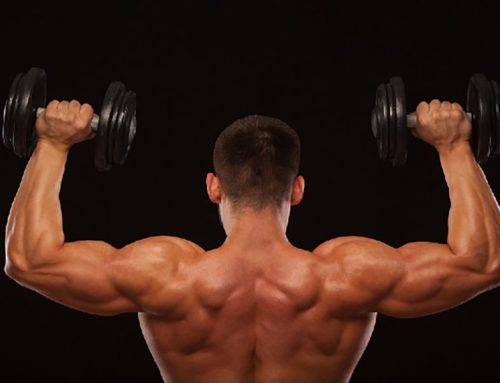
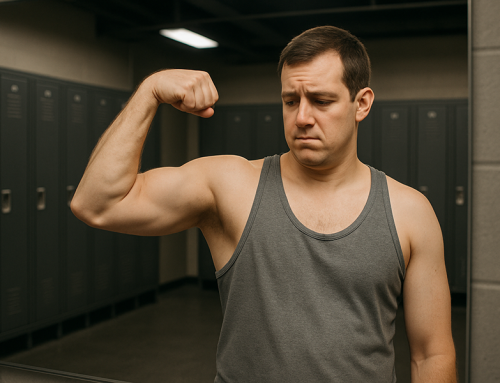
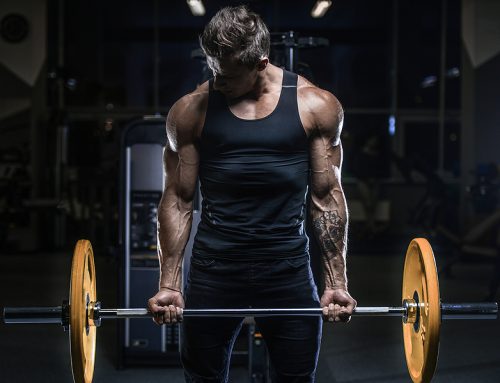
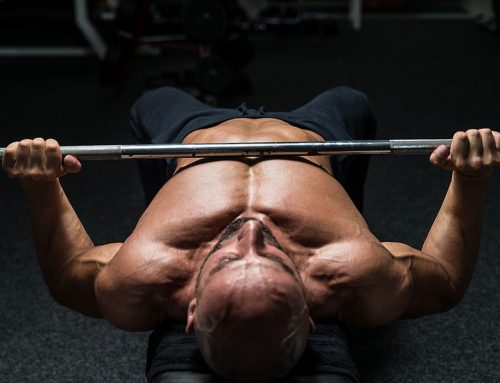
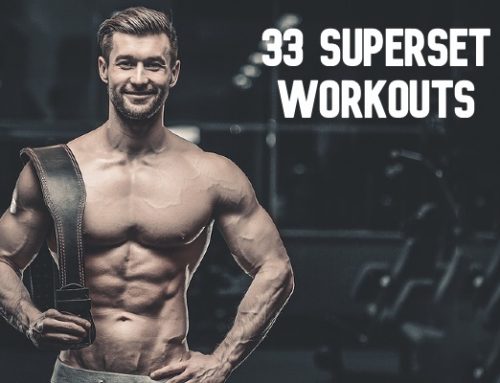
Leave A Comment